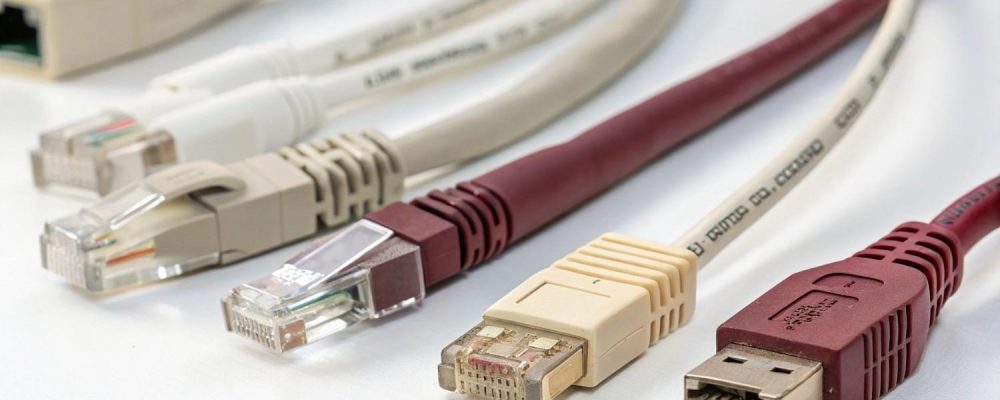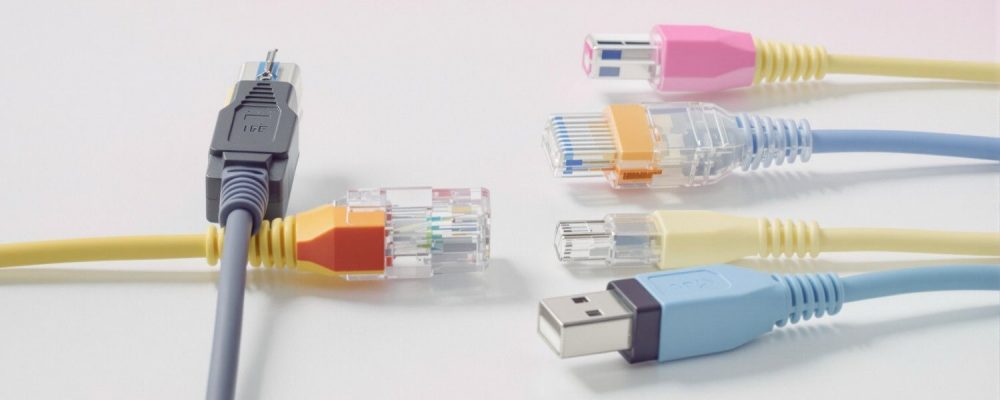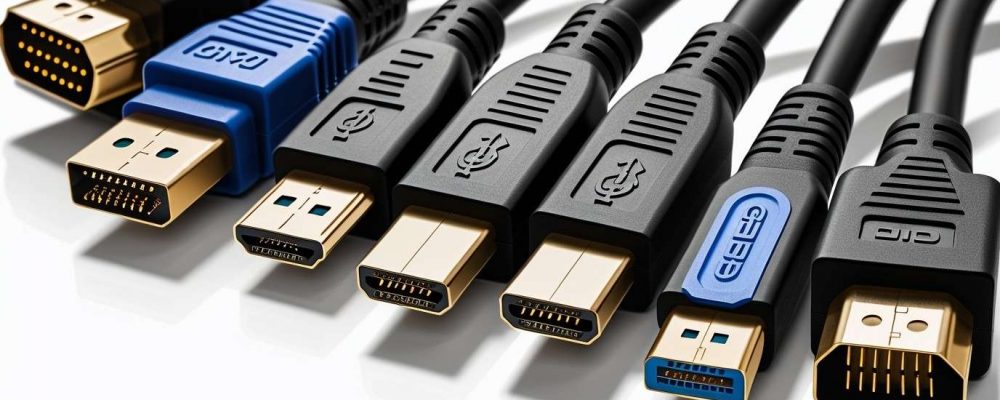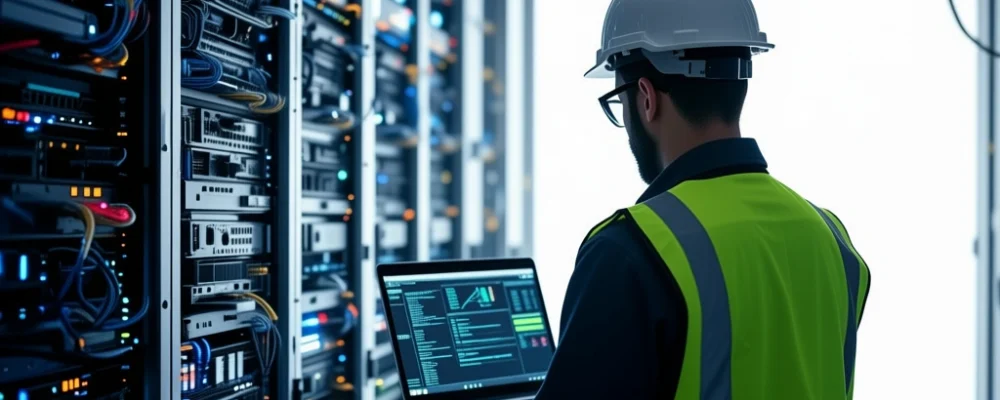Summary: Depending on the types of cables and connectors used, a computer network allows smooth data, power, and signal transmission. From HDMI, USB, and DisplayPort multimedia-based connectors to Ethernet, coaxial, and fiber-optic networking cables, each has specific requirements. The connector enables compatibility and reliability. Choosing the appropriate one and getting it installed by a professional will give your network better performance, scalability, and business efficiency.

The information flows through invisible highways. Such highways are not cloud services or applications. Instead, they comprise the physical cables and connectors that discreetly keep everything moving. Whether it is a high-definition video call with a client, an enormous dataset being shifted between two servers, or simply putting a print job into motion, all these operations require a sturdy cable system.
Given that they often speak of servers, routers, and switches when describing their network. Businesses tend to forget that they need the cables and connectors to physically link the systems. Choosing the different types of computer cables is not a matter of convenience.
Physically, a computer cable is a conduit that carries:
It comprises conducting materials, usually copper or fiber, wrapped in one or more insulating layers. It helps to avoid interference and guarantee reliable transmission.

The variety of computer cables is attributed to the variety of tasks that modern computer systems perform. These cables handle different situations:
HDMI cables basically gave a new life to multimedia consumption and sharing. The older standards had two separate lines for audio and video, while HDMI gives a single efficient channel for both.
HDMI is relevant in business for use in places other than conference rooms, training centers, and collaborative spaces. It is used where crystal-clear visuals must be displayed alongside synchronized audio.
While HDMI stands for multimedia, USB stands for everything else. Since its inception in the late 1990s, the USB has experienced a revolution from an early spec into the most versatile cable standard.
Uses: For connecting printers, external drives, scanners, smartphones, and peripherals.
Versions:
For IT managers, USB-C is a very valuable option. It charges your laptop and transfers your data while linking to display—all through one line. So it cuts out the clutter and adds the flexibility.
DisplayPort cables are designed for high-performance computing. It is not merely an alternative to HDMI. They are more scalable and professional-grade than they often are.
Applications: Graphic designing, video editing, CAD modeling, and gaming.
Strengths:
In environments that lean on workstations for creative work or require multiple monitors, DisplayPort stands to be the standard that will guarantee their professionals get the performance their applications demand.
VGA is the grandfather of display connectivity. Introduced in the 1980s, it carried analog signals. It became the foundation for communications from a PC to a monitor.
While VGA has largely been replaced. It remains relevant in certain industries where legacy infrastructure is still operational.

When a computer communicates with external devices, a host of cables comes into the picture.
Ethernet cables are the backbone for working within a LAN and use twisted pairs of copper wires to minimize interference while also conforming to the appropriate Ethernet standards.
Cable Type | Max Speed | Distance | Common Usage |
Cat5e | 1 Gbps | 100m | Small offices, residential |
Cat6 | 1–10 Gbps | 55m–100m | Mid-sized offices |
Cat6a | 10 Gbps | 100m | High-density offices |
Cat7 | 10 Gbps | 100m | Industrial floors, EMI-prone sites |
Cat8 | 25–40 Gbps | 30m | Data centers |
Cat6a is best from the perspective of buildings, combining the cost factor with scalability for present-day workloads and for some growth.
With their thick shielding and central conductor, coaxial cables once reigned supreme in networking.
They have become less common in LANs, whereas the coaxial remains truly paramount for video surveillance and RF-dependent settings.
If speed and distance are paramount considerations, nothing can compete with fiber optics. As opposed to electricity, they provide unmatched performance using light.
Type | Core Size | Transmission | Typical Usage |
Single-Mode (SMF) | 8–10 µm | Laser-based, long-haul | Telecom, inter-building |
Multi-Mode (MMF) | 50–62.5 µm | LED-based, short-haul | Data centers, LANs |
Fiber is indispensable for:
Yes, fiber requires a higher upfront investment, but its scalability and resistance to interference make it the gold standard for enterprises that simply cannot afford downtime.
Cables are only as good as the connectors on the ends. Precision terminations minimize data loss, avoid downtime, and meet industry standards.
RJ45 connectors are the most widely used type in networking and still form the basis of wired connectivity within office environments.
A little behind the new generation of enterprise LANs, BNC connectors are the backbone of security infrastructures in places where coaxial cabling dominates.
Connector | Characteristics | Use Case |
SC (Subscriber Connector) | Push-pull locking, square design | Data centers, telecom |
LC (Lucent Connector) | Small form factor, precise alignment | High-density fiber networks |
ST (Straight Tip) | Bayonet lock, robust | Industrial & military applications |
Among these, LC connectors have become the default for modern fiber deployments due to their compact size and ability to pack more connections into limited spaces.
When it comes to USB cables, it is all about the connector.
The USB connectors are now increasingly used for network infrastructure management consoles, IoT devices, and mobile integrations.
Cable and connector choices cannot be a back-office consideration now; they lead to business results:

Theoretical knowledge of cables is one thing. Correct installation is another. Even high-quality Cat6a or fiber optic lines can fail without:
This is where businesses benefit from working with seasoned partners. At Network Drops, we’ve spent decades building networks across New Jersey and Pennsylvania that don’t just connect device. They enable growth, safeguard uptime, and prepare companies for the future.
From HDMI and USB, which keep daily interactions smooth, to Ethernet and fiber optics, which form enterprise backbones, computer cables and connectors are the unsung infrastructure. A coaxial cable, a twisted-pair cable, and fiber-optic cables all have different areas of application, and the connectors at their ends guarantee good performance. Those businesses that approach cable selection strategically, rather than casually, enjoy greater performance, fewer disruptions, and an infrastructure ready for all the demands of tomorrow. And with expert guidance of Network Drops, what may start out as just functional cabling soon becomes a step toward a competitive future.
In network media, the common connectors include:
No. Because of their design and application, different types of cable connectors use different types of connectors.
The connector you need depends on the cable you use and the devices you want to connect.
Sometimes. Under favorable conditions, the connectors on old network cables can be reused. Only if they suit the new cable.
If you use the wrong connector with your network cable:
"*" indicates required fields
Scott Fcasni is the driving force behind Shock I.T. Support’s commercial datacomm cabling division, delivering expert solutions that power reliable, high-performance network infrastructures. With extensive experience in structured cabling and a commitment to precision, Scott ensures that every project—whether for small businesses or large enterprises—meets the highest standards of quality and scalability.